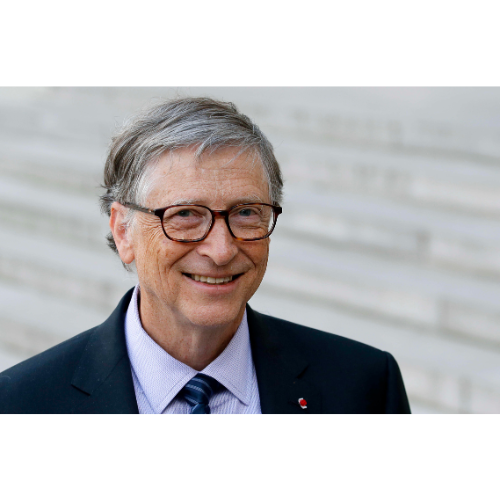The Greatest Business Moves of Bill Gates That Changed the World
Bill Gates is a master strategist whose business decisions have shaped the modern digital era. From founding Microsoft to redefining philanthropy, Gates’ career is a blueprint for innovation and long-term thinking.
Founding Microsoft and Betting on Software
In 1975, Bill Gates and Paul Allen founded Microsoft with a bold vision: to put a computer on every desk and in every home. At a time when hardware dominated the tech landscape, Gates made a contrarian bet—he focused on software.
His first major move was licensing MS-DOS to IBM in 1980. Instead of selling the software outright, Gates negotiated a licensing deal that allowed Microsoft to retain ownership. This decision gave Microsoft control over the operating system used by millions of IBM-compatible PCs, setting the stage for explosive growth.
Launching Windows and Creating a User-Friendly Interface
Gates’ next strategic leap was the development of Windows, launched in 1985. While MS-DOS was powerful, it was command-line based and intimidating for average users. Windows introduced a graphical user interface (GUI), making computers accessible to the masses.
By the early 1990s, Windows had become the dominant operating system worldwide. Gates’ insistence on bundling Windows with Microsoft Office created a seamless ecosystem that locked in users and businesses alike.
Outmaneuvering Competitors and Navigating Antitrust Challenges
Throughout the 1990s, Gates demonstrated ruthless business acumen. He outmaneuvered competitors like Apple, Netscape, and IBM by aggressively expanding Microsoft’s product line and leveraging its dominance in operating systems.
However, this success attracted regulatory scrutiny. In 1998, the U.S. Department of Justice filed an antitrust lawsuit against Microsoft. Gates’ handling of the crisis—though controversial—ultimately preserved the company’s core structure. Microsoft agreed to certain restrictions but avoided a breakup.
This period showcased Gates’ ability to navigate legal and political challenges while maintaining strategic focus.
Investing in Internet Technologies and Cloud Computing
Although Microsoft was slow to embrace the internet initially, Gates pivoted quickly. In 1995, he issued the famous “Internet Tidal Wave” memo, declaring the web as the future of computing. This led to the development of Internet Explorer and a shift in Microsoft’s strategy.
Later, under Gates’ influence, Microsoft began investing heavily in cloud computing. Azure, launched in 2010, became one of the leading cloud platforms globally. Gates’ early support for cloud infrastructure laid the groundwork for Microsoft’s resurgence in the 2010s and 2020s.
Strategic Acquisitions That Expanded Microsoft’s Reach

Gates understood the power of strategic acquisitions. While he wasn’t CEO during all of them, many were rooted in his long-term vision. Key acquisitions include:
LinkedIn (2016): Strengthened Microsoft’s position in enterprise and professional networking.
GitHub (2018): Cemented Microsoft’s role in the developer community.
Nokia’s mobile division (2014): Though controversial, it marked an attempt to compete in mobile hardware.
These moves diversified Microsoft’s portfolio and aligned with Gates’ belief in platform ecosystems.
Transitioning from CEO to Philanthropist Without Losing Influence
In 2000, Gates stepped down as CEO and handed the reins to Steve Ballmer. However, he remained actively involved as Chief Software Architect and later as a board member. This transition allowed Gates to focus on global health and education through the Bill & Melinda Gates Foundation, while still influencing Microsoft’s direction.
His ability to step back from day-to-day operations while maintaining strategic oversight is a rare feat in business leadership.
Championing Ethical Tech and Global Development
Beyond profits, Gates has consistently advocated for ethical technology and global development. He’s invested in clean energy startups, AI safety initiatives, and pandemic preparedness. His business moves now intersect with humanitarian goals, proving that capitalism and conscience can coexist.
For example, Gates backed TerraPower, a nuclear innovation company, and supported Breakthrough Energy Ventures, a fund for climate tech. These ventures reflect his belief in long-term, scalable solutions.
Building a Legacy of Innovation and Impact
Bill Gates’ business legacy is about impact. He built Microsoft into a global powerhouse, navigated fierce competition, and redefined what it means to be a tech leader. His moves—from licensing software to investing in cloud computing—have influenced generations of entrepreneurs.
Today, Gates continues to shape industries through his investments, philanthropy, and thought leadership. His career offers timeless lessons in vision, adaptability, and strategic execution.
